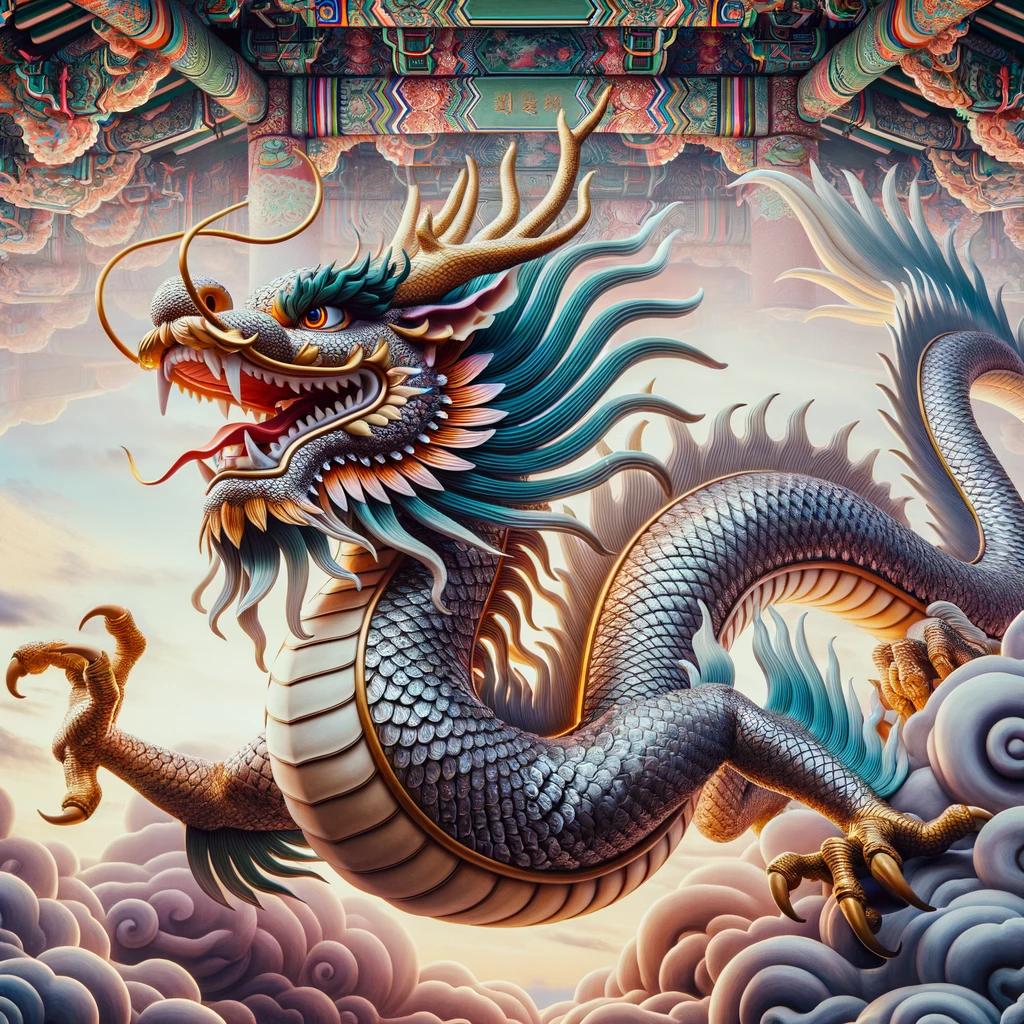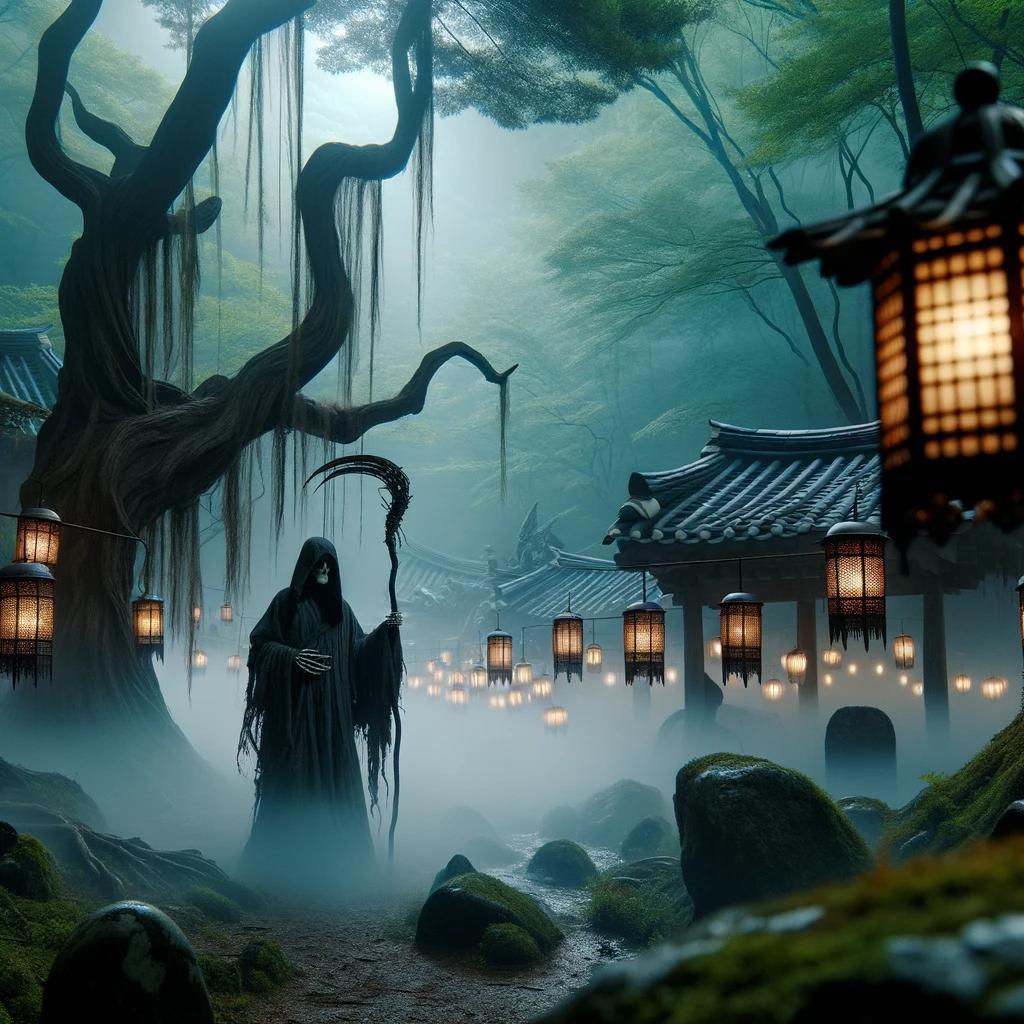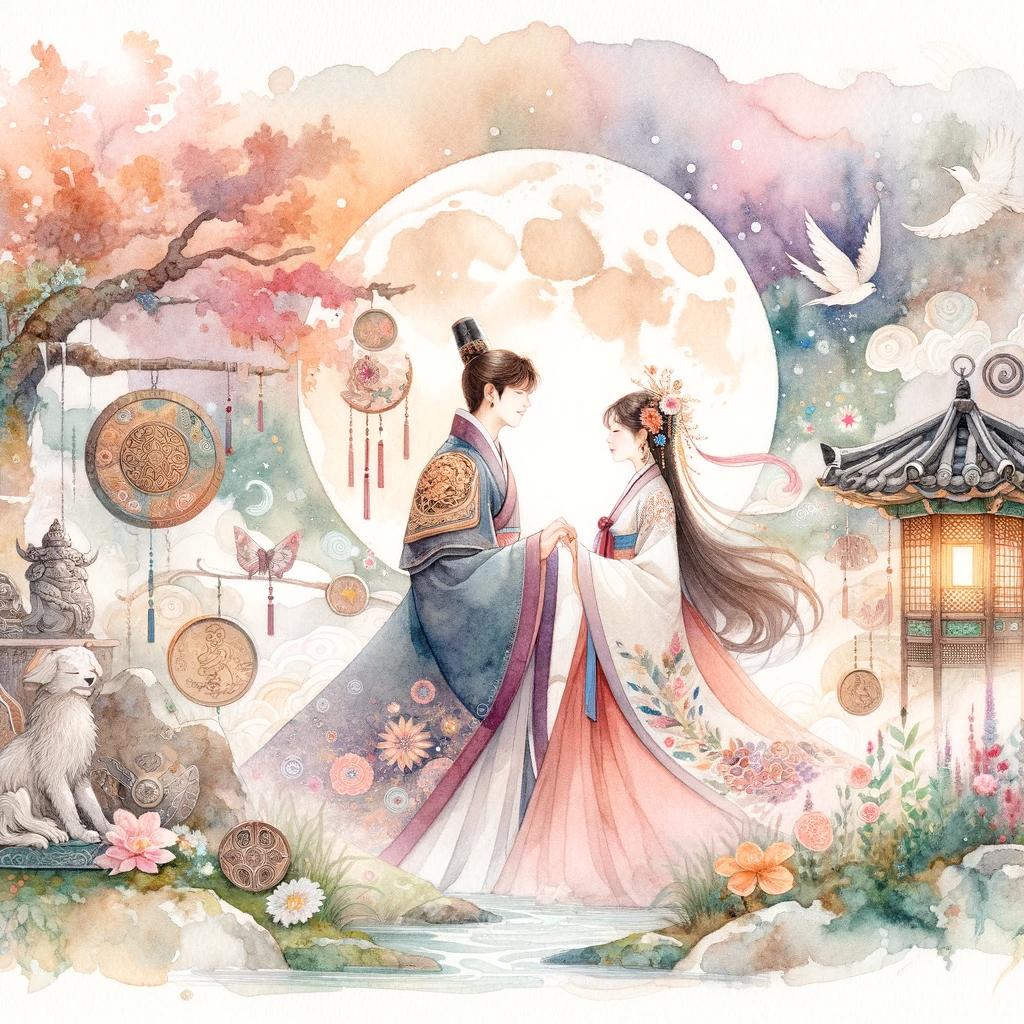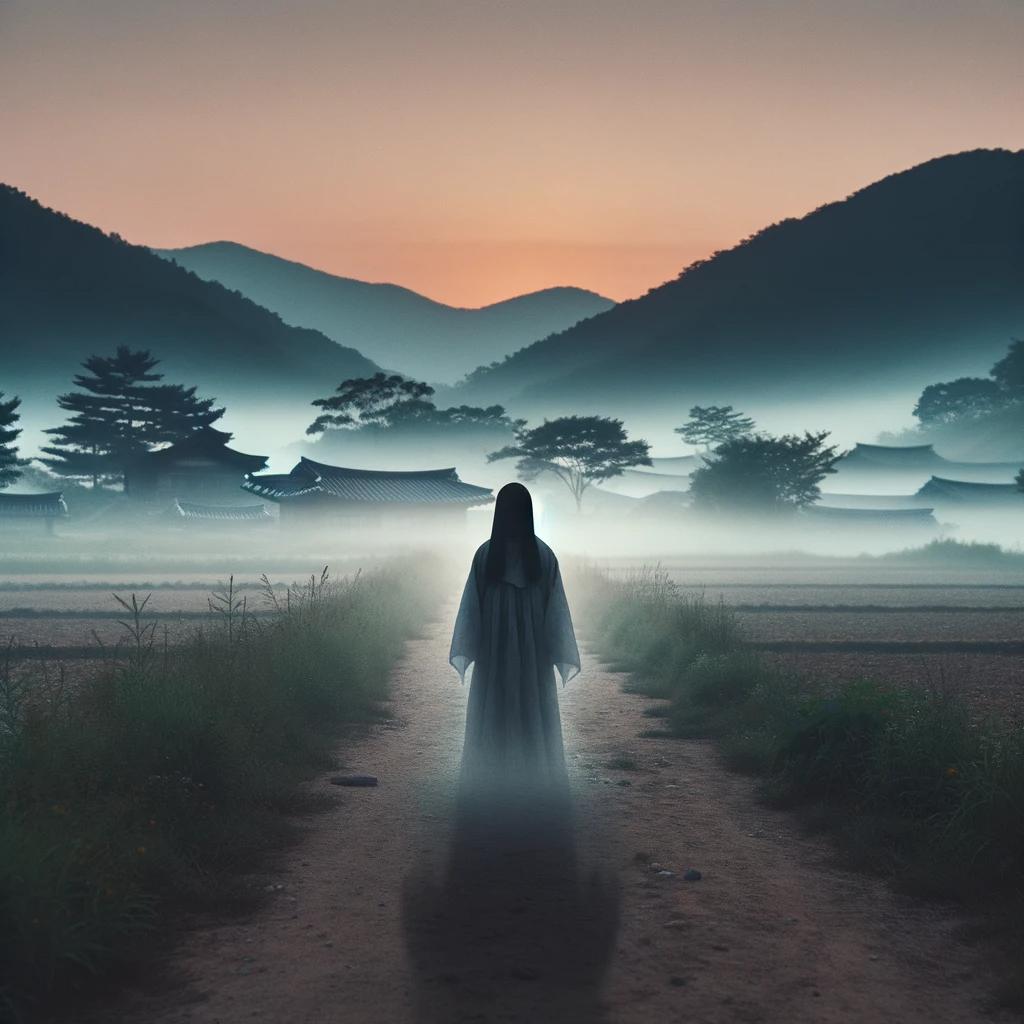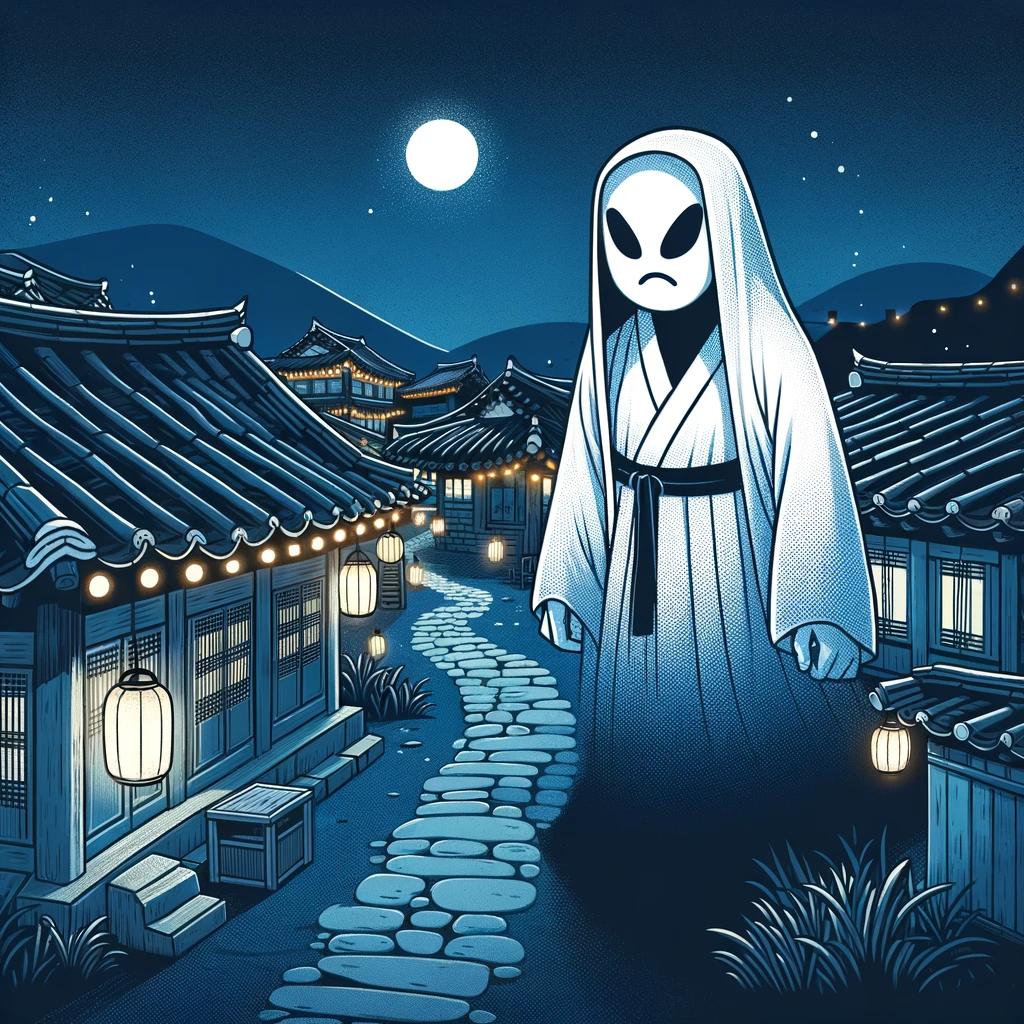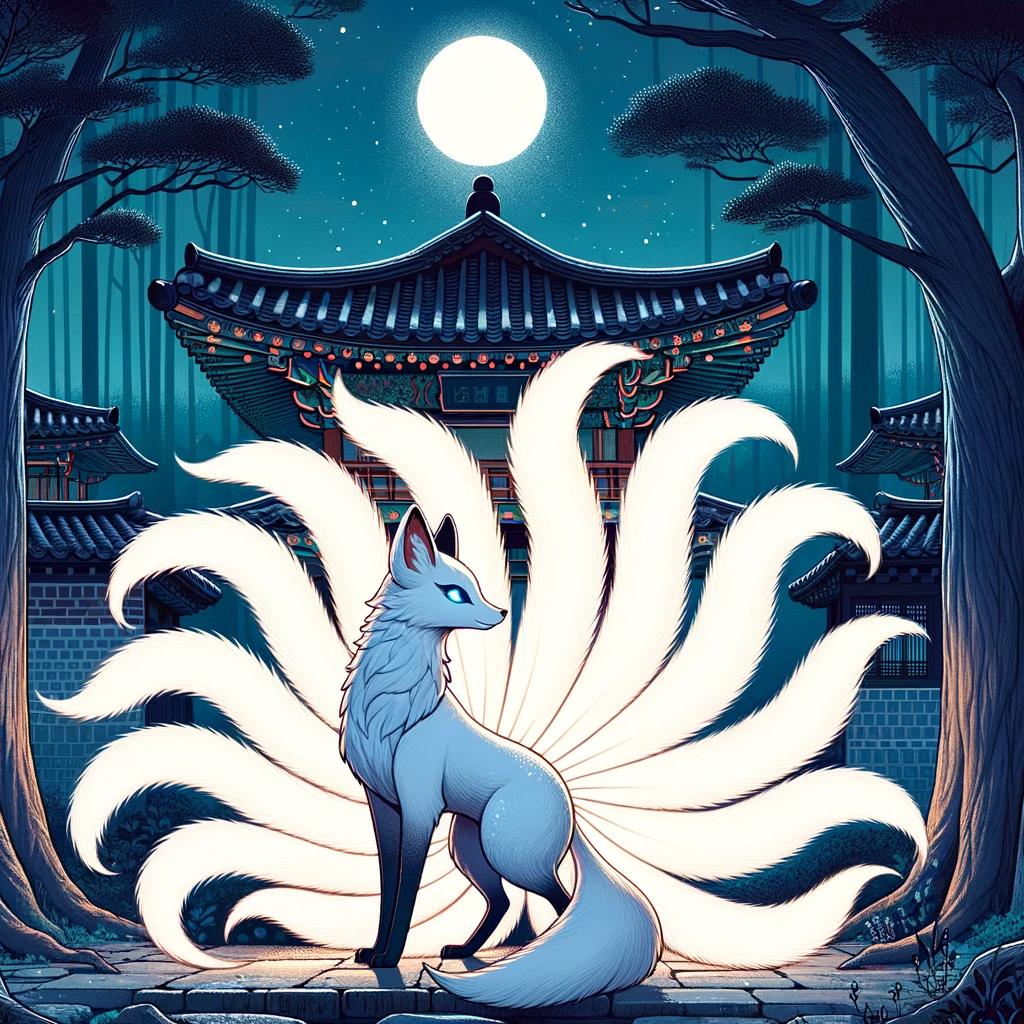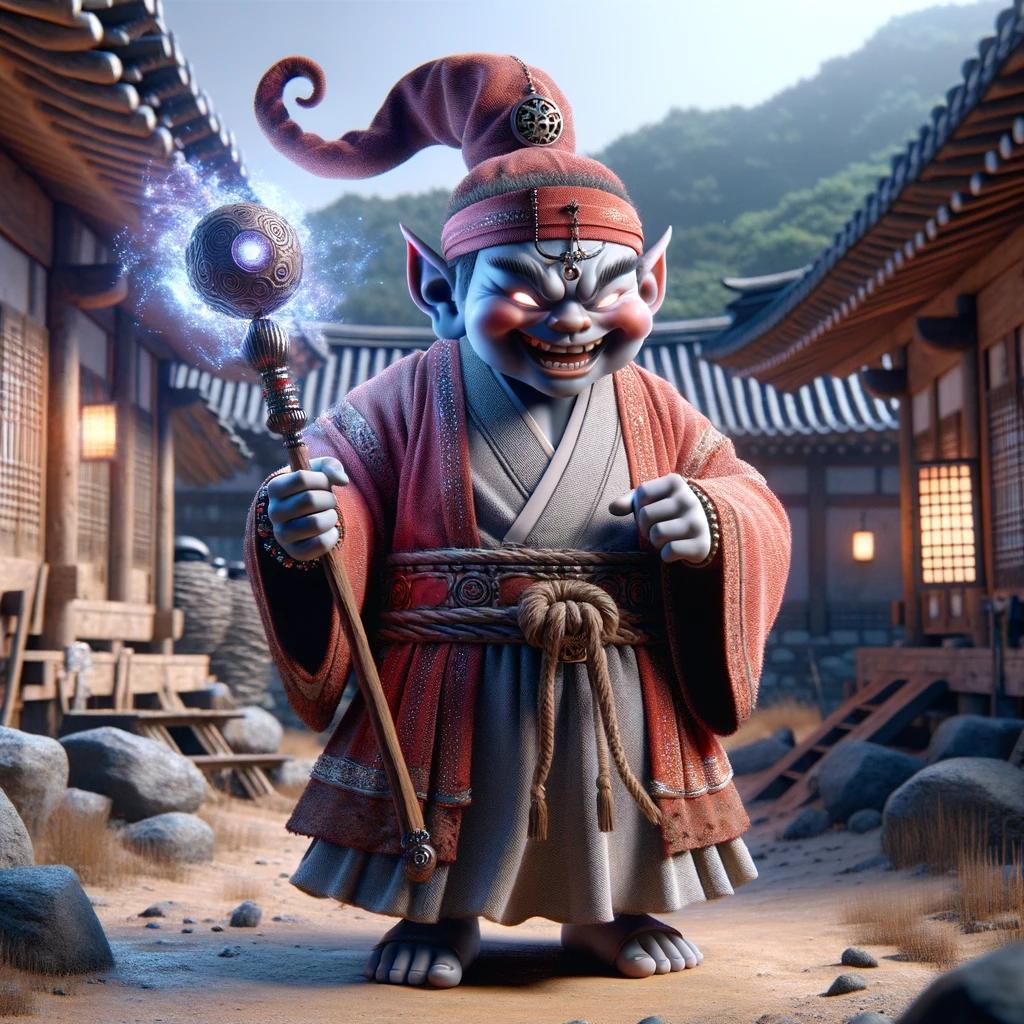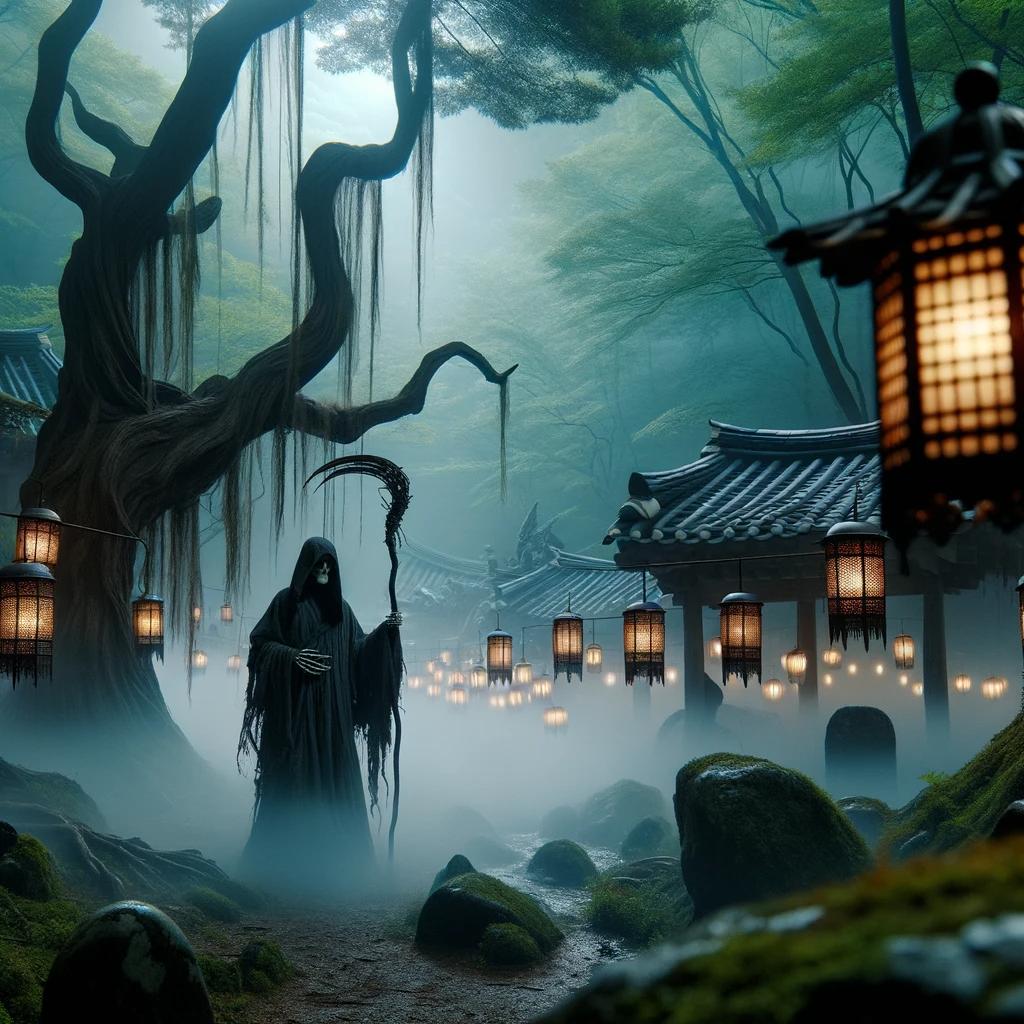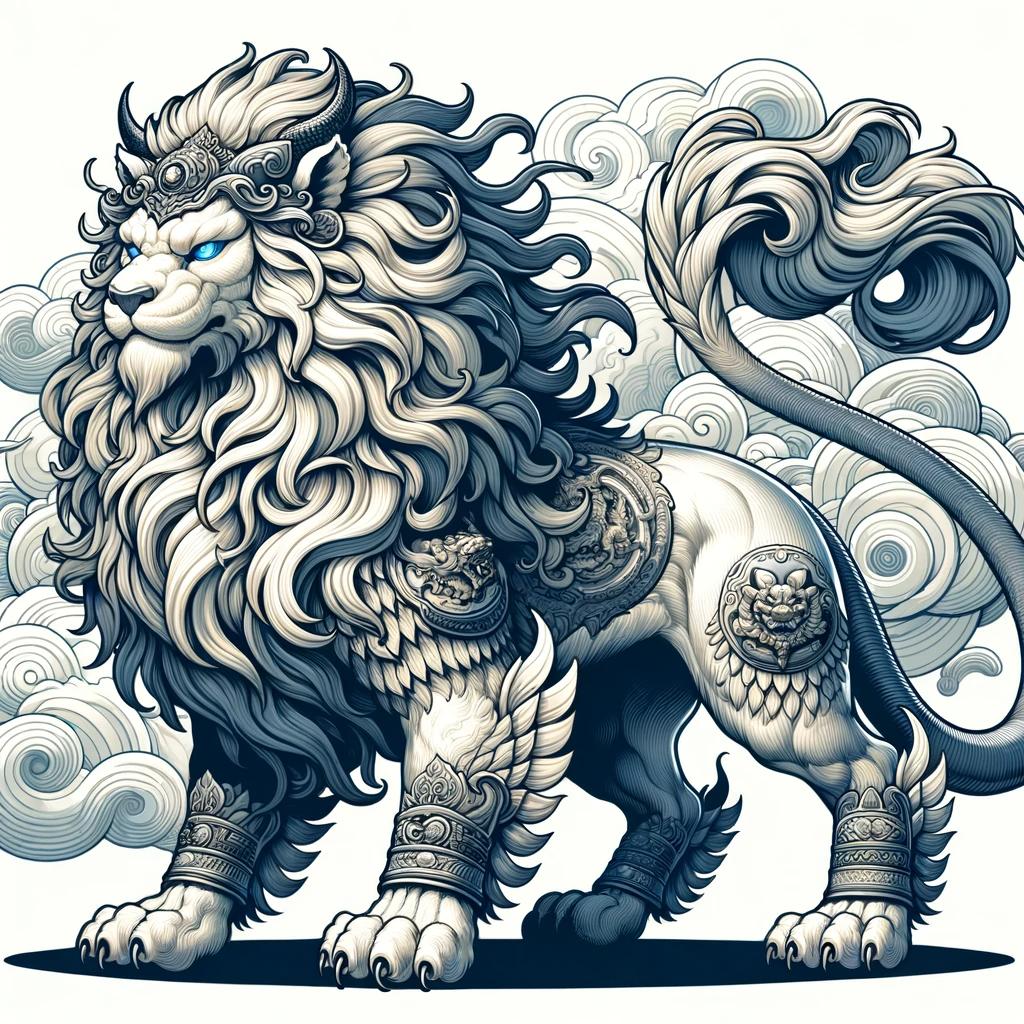The Enigmatic Realm of Korean Dragons
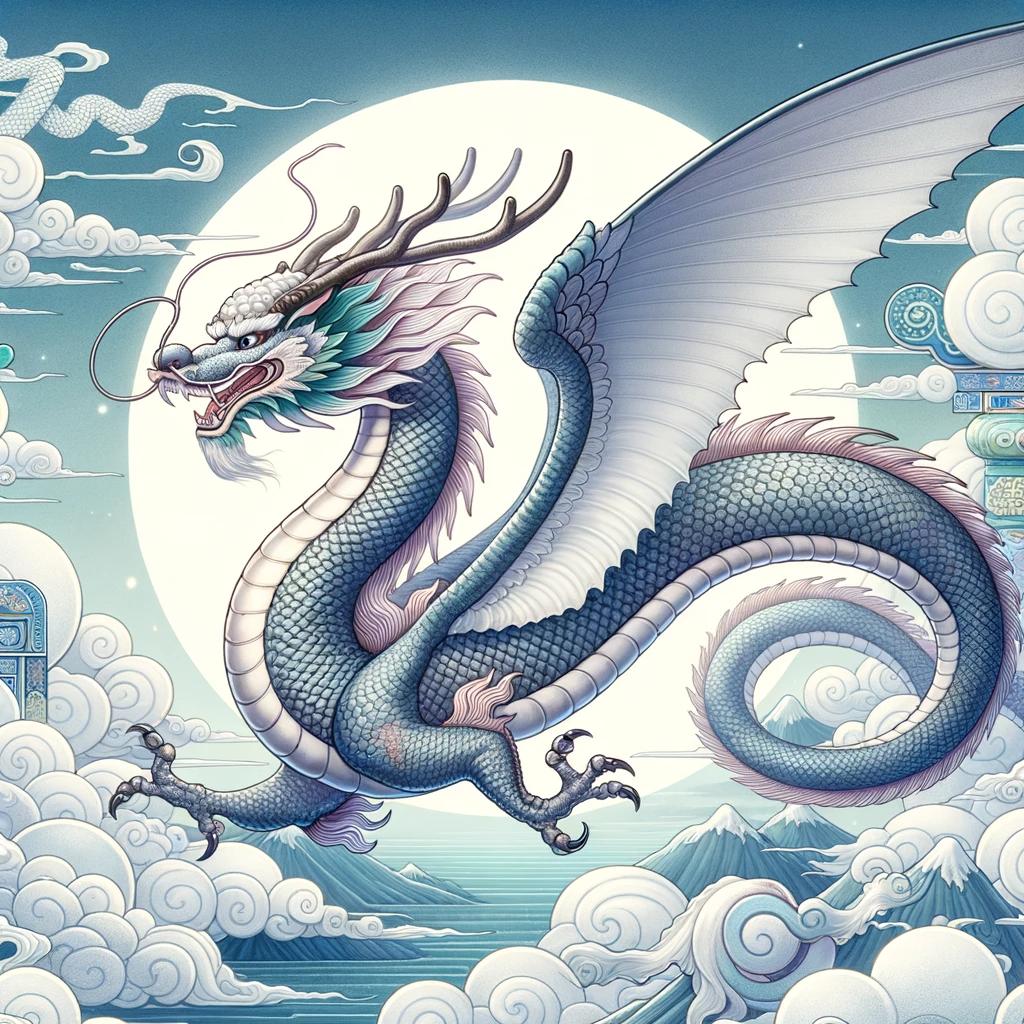
The Korean Dragon Yong, also known as “Yong” in Korean, embodies a profound aspect of Korean culture and mythology. With three main types – Yong, Yo, and Kyo – these dragons are celebrated for their distinct appearances, featuring rabbit-like eyes, frog-like bellies, and a characteristic 81 scales on their back, which resonates deeply with dragon symbolism in Korean culture.
They are often depicted with four claws, distinguishing them from Chinese and Japanese dragons, which typically have five and three claws, respectively. This distinction is a marker of identity and cultural uniqueness.
During the Joseon Dynasty, Korean rulers embraced the dragon korean mythology, adorning themselves with dragon-inspired attires and emblems to symbolize their sovereign power and connection to the celestial yong dragon.
In addition to their symbolic presence in regalia, Korean dragons are intricately woven into the fabric of Korean art and religion. They find artistic representation in Buddhist temples and ceramics, signifying their spiritual meaning and are connected to traditional Korean music through drums adorned with dragon motifs.
The legacy of the Korean dragon, particularly the traditional Korean dragon, permeates modern Korean society, illustrating the enduring influence of these majestic creatures.
Understanding Korean Dragons
The Korean Dragon Yong, with its rich tapestry of meaning in Korean culture, stands as a fascinating emblem deeply rooted in Korean mythology and korean gods. Symbolizing power, wisdom, and a profound spiritual meaning, this section delves into the mythology, symbolism, and cultural significance enveloping these legendary beings.
The Mythology of Korean Dragons
In Korean mythology, dragons are venerated as creatures closely intertwined with water sources, rainfall, and fertility, echoing the tales of korean water dragon. They are believed to reside in sacred bodies of water, such as lakes, rivers, and the ocean, embodying the essence of what do dragons symbolize in Korea.
According to ancient lore, these dragons were considered the rulers of these aquatic realms, capable of wielding control over clouds and summoning rains to nurture agricultural pursuits. Beyond their dominion over water, these mythical beings are seen as divine, capable of transcending realms and embodying the dragon spiritual meaning.
They were exalted as celestial beings with the gift of flight, traversing between the earthly and divine realms. Korean folklore often casts dragons as messengers of the heavens, bearers of blessings to the mortal realm, signifying the deep-rooted dragon meaning in Korean culture.
Symbolism and Cultural Significance of Korean Dragons
The symbolism and cultural significance of Korean dragons span across various facets of Korean society. These majestic creatures represent power, strength, and authority, closely associated with the imperial and royal echelons, symbolizing the divine right to rule.
Their embodiment of wisdom and intelligence positions them as guardians of knowledge, often depicted clutching a pearl in their mouth, a symbol of enlightenment and the pursuit of knowledge.
Furthermore, the korean yong dragon holds immense spiritual significance.
Delving into the mythology and symbolism of Korean dragons unveils the rich tapestry of cultural heritage and beliefs cherished by the Korean people, reflecting the profound significance of the traditional Korean dragon in their cultural consciousness.
Different Types of Korean Dragons
The lore of Korean dragons encompasses three main types: the Majestic Yong, the Gentle Yo, and the Earthly Kyo, each bearing unique characteristics and playing distinct roles within Korean folklore and culture, a testament to the diverse korean dragon names and their meanings.
The Majestic Yong – The Most Powerful Korean Dragon
The Yong, with its esteemed place in the hierarchy of Korean dragons, is considered the most powerful and majestic. Its dominion over the sky and its symbolic representation of strength and protection underline the what does a dragon symbolize in Korean ethos.
Often depicted with prominent horns, Yong possesses the miraculous ability to create rain and control the weather, cementing its status as a guardian deity and an emblem of supreme authority.
The Gentle Yo – Dragon of the Ocean
The Yo, also known as the Dragon of the Ocean, does not have horns like the Yong.
It resides in the depths of the ocean, representing tranquility and wisdom. Known for its friendly nature, the Yo is associated with bringing calm seas and good fortune to fishermen and sailors.
It symbolizes harmony and balance.
The Earthly Kyo – Dragon of the Mountains
The Kyo, often referred to as the Dragon of the Mountains, makes its home in the earthy realm of mountains and forests. It is associated with nature and is believed to have the ability to grant blessings and bring abundance to the land.
The Kyo symbolizes vitality, fertility, and prosperity.
In conclusion, the Korean dragon mythos consists of the powerful and protective Yong, the gentle and wise Yo, and the earthy and abundant Kyo. These different types of Korean dragons, or “yong” in Korean, embody various aspects of Korean folklore, symbolizing authority, tranquility, and prosperity.
Their significance is deeply rooted in Korean mythology gods and the rich tapestry of east Asian cultural narratives.
Unique Physical Characteristics of Korean Dragons
Korean dragons possess fascinating physical attributes that set them apart from other dragon mythology. They are renowned for their distinctive features, which include:
Rabbit-like Eyes and Frog-like Bellies
This attribute adds to the mystical allure of these creatures, highlighting the unique Korean style dragon aesthetics.
Additionally, their bellies resemble those of frogs, which symbolize fertility and abundance in Korean culture, echoing the nurturing aspect of these revered creatures.
Back Scales and Four Claws
An intriguing aspect of Korean dragons is their possession of precisely 81 scales on their back, each representing different mystical qualities. These scales form intricate patterns that enhance their majestic appearance, embodying the essence of Asian dragons.
Moreover, Korean dragons typically have four claws, which differentiate them from other dragons in different mythologies. This distinct characteristic underscores the uniqueness of the Korean name for dragon, setting them apart from their Chinese and Japanese counterparts.
Comparison with Chinese and Japanese Dragons
As Korean dragons traveled westward or southward, their claw count would change, resulting in varying numbers of claws for Chinese and Japanese dragons. While Chinese dragons, including the esteemed Azure Dragon, are depicted with five claws, Korean dragons specifically maintain four, highlighting their unique heritage.
On the other hand, Japanese dragons traditionally have three claws, distinguishing them from both Korean and Chinese counterparts, and showcasing the diverse interpretations of dragon mythology across east Asian cultures.
Korean Dragons in History and Royalty
Korean Dragons during the Joseon Dynasty
During the Joseon Dynasty, Korean dragons played a significant role in the royal courts and were deeply intertwined with the dynasty’s history and the overarching east Asian mythological landscape.
The ruling class embraced the symbolism and power associated with these mythical creatures, integrating Korean deities and the divine imagery of dragons into the cultural and political ethos of the kingdom.
Joseon rulers regarded themselves as descendants of dragons and utilized dragon imagery to reinforce their legitimacy and authority, often invoking the legendary King Munmu and his connection to the dragon wall to emphasize this lineage.
Dragons were present in various aspects of Joseon society, from palaces to official ceremonies.
They were depicted in architectural designs, paintings, and sculptures, symbolizing the divine connection between the heavens and the earthly realm. Dragons were believed to bring fortune, prosperity, and protection, making their presence essential during important events and rituals.
This belief is echoed in the stories of the Imugi, a proto-dragon that could become a true dragon, reflecting the transformative power and potential within Korean dragon lore.
Dragon-inspired Royal Attire and Emblems
Dragon motifs also found their way into the attire and emblems of the Joseon royalty.
The rulers adorned dragon-inspired clothing, such as dragon robes and dragon-shaped headwear, to highlight their status and association with the divine creature.
Each dragon motif held specific meanings, colors, and number of claws, reflecting the rank and position of the wearer. The incorporation of dragon imagery into royal attire showcased a visual representation of power, hierarchy, and ancestral lineage, further cementing the cultural and spiritual significance of dragons within the South Korean historical narrative.
Korean Dragons in Art and Ceramics
Artistic expressions of Korean dragons can be found in various mediums, including Buddhist temples and ceramics. These representations not only showcase the creativity and craftsmanship of Korean artists but also emphasize the cultural significance of dragons in Korean society.
Dragon Depictions in Buddhist Temples
Buddhist temples in Korea often feature intricately detailed murals and latticework that showcase dragon imagery. These depictions symbolize the spiritual connection between the celestial realm and the earthly realm that dragons are believed to possess.
The dragons’ majestic and powerful presence within the temple walls serves to enhance the sacred atmosphere and inspire awe in worshippers.
Playful Dragon Motifs in Korean Ceramics
Korean ceramics have a rich tradition of incorporating dragon motifs into their designs. These playful and vibrant depictions of dragons add a touch of whimsy and liveliness to the pottery. The dragons are often depicted in various poses, such as dancing or flying, reflecting the dynamic nature of the mythical creatures.
The use of dragon motifs in ceramics not only showcases the creativity of Korean artisans but also serves as a nod to the revered status of dragons in Korean culture.
Notable Examples of Dragon-themed Artwork
The Dragon Jar
In the collection of Korean ceramics at the Honolulu Museum of Art, there is a notable example of a dragon-themed artwork, known as the Dragon Jar.
This jar features a beautifully detailed dragon design, showcasing the intricate craftsmanship of Korean potters. The Dragon Jar serves as a testament to the artistic excellence and cultural significance of Korean dragon-themed ceramics, embodying the essence of the dragon king and the great king from Korean mythology.
Koreans thought that these dragons not only symbolized power but also served as protectors of the kingdom, guarding against evil and misfortune.
Dragon-inspired Paintings
Korean artists throughout history have produced numerous paintings inspired by Korean dragons. These artworks often depict dragons in various settings, such as soaring through the clouds or protecting sacred sites. The paintings capture the power, beauty, and symbolism associated with Korean dragons, serving as a visual testament to their enduring allure and the belief that they have the ability to ward off evil spirits and bring good fortune.
These paintings are often imbued with the belief that Korean dragons, unlike their Western counterparts, have four legs and are seen as benevolent forces in the natural world.
Dragon Sculptures
Another form of dragon-themed artwork in Korea is dragon sculptures.
These sculptures can be found in various places, such as palaces, public parks, and museums. They are often intricately carved and meticulously crafted, embodying the majesty and grace of Korean dragons.
Reflecting the cultural reverence, these sculptures not only beautify public spaces but also serve as a reminder of the cultural heritage and mythical allure of Korean dragons, acting as guardians that protect against evil spirits and negative energies.
These sculptures, with the dragon’s serpentine form, often include depictions of dragons with legs and without wings, highlighting the unique characteristics of Korean dragons as compared to their Western and European counterparts.
Korean Dragons and Music
Korean dragons have a strong association with traditional music, particularly in the use of drums. The rhythmic beats of drums are believed to evoke the powerful presence and spirit of the dragon, enhancing the overall performance and connecting to the natural world.
The drum, which represents the voice of the dragon, serves as a bridge between the physical and the spiritual, echoing the dragons’ mythical role in Korean folklore.
The Connection between Korean Dragons and Traditional Drums
In Korean culture, traditional drums play a significant role in various celebrations, rituals, and performances.
The connection between Korean dragons and traditional drums lies in the shared symbolism of power, energy, and vitality. These aspects are thought to reflect the dragon’s attributes, such as its strength and its role in Korean mythology as a protector and a symbol of prosperity.
Since ancient times, the Goguryeo dynasty utilized these dragon symbols to assert their divine mandate and connection with the dragon’s celestial powers.
- The drummers, much like the dragons themselves, are seen as custodians of tradition and carry the responsibility of preserving cultural heritage, echoing the sentiments that Korean dragons originally symbolized the harmony between the royal court and the natural world.
- The deep, resonating sounds of the drums, characterized by their intensity and vigor, mirror the strength and majesty attributed to the mythical Korean dragons, drawing parallels to east Asian dragons and their depiction in Korean mythology.
- Through their rhythmic beats, the drums create an immersive experience, transporting listeners into the realm of mythical creatures and ancient legends, celebrating the rich heritage of the Korean peninsula and its connection to the dragon king.
- Traditional drumming performances often incorporate movements and gestures inspired by dragon imagery, embodying the grace and fluidity associated with these legendary creatures, much like the dragon dance that symbolizes good luck and prosperity.
Dragon-inspired Musical Performances in Korean Culture
Beyond the realm of traditional drumming, Korean dragons have also influenced other musical genres and performances, showcasing their enduring significance in Korean culture.
- Dragon dance: In festive occasions, specially trained performers enact dragon dances, weaving intricate formations and movements that emulate the mythical creature’s serpentine grace, inspired by stories from the three kingdoms era.
- Dragon-inspired musical instruments: Some traditional Korean musical instruments, like the gayageum and the jing, bear dragon-inspired motifs in their design and decorations, reflecting the cultural reverence for these majestic creatures and their symbolic connection to the East Sea and the natural world.
- Dragon-themed musical compositions: Composers have drawn inspiration from Korean dragon mythology to create captivating musical pieces that capture the essence of dragon folklore and mystique, often evoking the powerful imagery of the dragon king and his dominion over the East Sea.
Through the harmonious integration of music and mythical symbolism, Korean dragons continue to inspire and enrich the vibrant music culture of Korea, leaving an indelible mark on its traditional and contemporary musical expressions.
Korean Dragon Yong and its Representation in Popular Culture
Korean Dragon Yong in Movies, TV Shows, and Literature
The captivating allure of Korean Dragon Yong has made it a popular subject in various forms of entertainment. In movies, such as historical dramas and fantasy films, the majestic and powerful Yong frequently takes center stage, showcasing its mythical abilities and captivating audiences with its awe-inspiring presence.
TV shows and series often incorporate Korean dragon mythology, featuring the Yong as a prominent character or using its symbolism in plotlines. Moreover, Korean Dragon Yong has inspired numerous novels and literary works, where it serves as a significant motif, adding depth and excitement to the narrative, often drawing on the rich tapestry of Korean mythology and the historical drama of the Korean peninsula.
Korean Dragon Tattoos: Symbolism and Designs
In the world of body art, Korean Dragon Yong tattoos hold great significance. Deeply rooted in Korean culture, these tattoos symbolize strength, protection, and spirituality. Designs often depict the Yong’s majestic form with intricate details, representing its mythical characteristics.
Some opt for colorful renditions, while others prefer black ink tattoos, emphasizing the dragon’s striking features and creating a bold visual impact. Korean Dragon Yong tattoos have become a popular choice for those seeking a symbolic and visually stunning representation of their heritage or admiration for Korean mythology.
- Korean Dragon Yong in movies and TV shows captivates audiences with its mythical abilities and awe-inspiring presence.
- Literary works often incorporate Korean Dragon Yong, adding depth and excitement to the narrative.
- Korean Dragon Yong tattoos symbolize strength, protection, and spirituality.
- Tattoo designs often depict intricate details of the dragon’s majestic form.
Korean Dragon Yong continues to leave a lasting impression in popular culture, captivating audiences through its portrayal in movies, TV shows, literature, and as a timeless symbol in the art of tattooing.
The Legacy of Korean Dragons
The legacy of Korean dragons, or “Yong” in Korean, plays a significant role in preserving and promoting Korean dragon culture and continues to have a profound impact on modern Korean society.
Let’s explore the importance of preserving this cultural heritage and the influence of Korean dragons in contemporary times.
Preserving and Promoting Korean Dragon Culture
The preservation of Korean dragon culture is crucial in safeguarding the rich historical and mythical significance associated with these majestic creatures. Efforts are made to document and research ancient texts and artworks, ensuring the authenticity and accuracy of dragon-related traditions.
This includes the exploration of Korean mythology and folklore, where dragons are said to inhabit rivers, lakes, and oceans, symbolizing the power and the mystery of the natural world.
Organizations and institutions are dedicated to the study, promotion, and education of Korean dragon heritage, such as the Korea Society.
They organize exhibitions, workshops, and seminars to raise awareness among both locals and international audiences. This fosters a sense of pride and appreciation for this unique aspect of Korean culture, highlighting the Korean dragon’s meaning and significance in mythology and folklore Korean mythology.
Artisans and craftsmen play an essential role in preserving Korean dragon culture through their meticulous craftsmanship. They create intricate dragon-themed artworks, ceramics, and textiles, keeping the traditional techniques alive for generations to come.
Their work often depicts the various forms of Korean dragons, from the benevolent guardian “Yong” to the mystical “Kyo” dragon, celebrating the diversity within Korean dragon lore.
Impact of Korean Dragons on Modern Korean Society
Korean dragons continue to have a profound impact on modern Korean society in various aspects, from entertainment to tourism and national identity.
The iconic imagery of Korean dragons is frequently depicted in movies, TV shows, and literature, captivating audiences worldwide. These portrayals often draw from traditional tales and legends, such as the story of the great king and the white dragon, enriching the global understanding of Korean culture.
Korean dragons have also become a significant part of the tourism industry, attracting visitors who are fascinated by the mystical allure of these mythical creatures. This boosts local economies and promotes cultural exchange.
The dragon’s symbolism, representing the elements and the balance of nature, resonates with visitors, enhancing their appreciation for Korean natural and cultural landscapes.
Furthermore, Korean dragons are deeply intertwined with the national identity of Korea.
The symbolism and historical significance associated with dragons evoke a sense of unity and pride among Koreans, reinforcing their cultural identity and heritage. This connection is celebrated in festivals and public art, where dragons symbolize the strength and unity of the Korean people.
- Preservation and research efforts help safeguard the historical and mythical knowledge related to Korean dragons.
- Dedicated organizations and institutions promote Korean dragon culture through exhibitions, workshops, and seminars.
- Artisans and craftsmen play a vital role in preserving traditional techniques and creating dragon-themed artworks.
- Korean dragons have a significant impact on modern Korean society through their portrayal in movies, TV shows, and literature.
- Korean dragon culture attracts tourists, contributing to local economies and cultural exchange.
- Korean dragons reinforce the national identity and cultural heritage of Korea.
In conclusion, the legacy of Korean dragons is essential in preserving Korean dragon culture and has a far-reaching impact on modern Korean society.
By valuing and promoting this cultural heritage, Koreans continue to embrace their rich history and deepen their connection to these mythical creatures.
.

